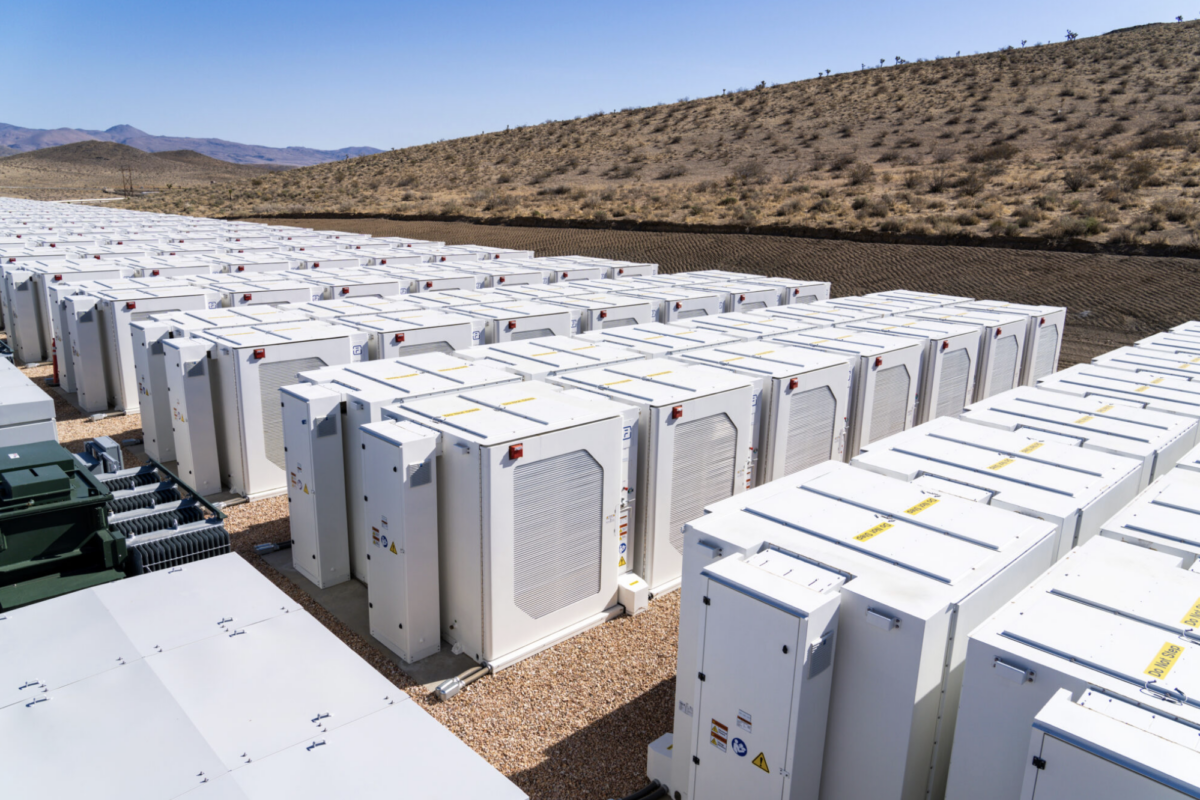From pv magazine USA
Seasonal storage of hydrogen to balance renewable generation will be cost-competitive in 2050, says DNV GL, a Norway-based consulting firm that advises the energy and shipping industries.
The firm models nonstop production of hydrogen every summer, using electrolysis units powered by market electricity. The hydrogen would be compressed and stored underground in salt caverns or depleted gas fields, and the following winter would be converted nonstop to electricity, using fuel cells. Daily balancing would be achieved using batteries and pumped hydro. To the extent the entire grid ran on renewables in the summer, the hydrogen would be “green,” or renewably produced.
A project along these lines is under development in Utah, and would use underground salt caverns to store hydrogen. The hydrogen would be renewably produced by 2045, to help Los Angeles achieve its renewables goal.
The DNV GL study also considered hydrogen produced on another continent using solar power, stored either as is, or after conversion to ammonia or synthetic methane. These options have costs more than double that of locally produced hydrogen, as they involve more steps, each with its own costs. All options were compared to wintertime combustion of natural gas with a carbon tax, pegged at €54 per metric ton of carbon dioxide.
DNV GL projects that a seasonal storage business will be preceded by a market for synthetic fuels. This is the case in the Utah hydrogen storage project, where plans for the early project years call for hydrogen to be mixed with natural gas for combustion in gas turbines.
DNV GL also projects that in 2050, ample short-term storage capacity will be available, in the form of grid batteries, electric vehicle-to-grid applications, and pumped hydro, “to accommodate daily and weekly cycles” in both renewable generation and electricity demand.
DNV GL’s report, “The Promise of Seasonal Storage,” includes an appendix showing capital and operating costs for all technologies evaluated.
This content is protected by copyright and may not be reused. If you want to cooperate with us and would like to reuse some of our content, please contact: editors@pv-magazine.com.



Solar at €20/MWh, electrolysis adds 25% so thats €25/MWh hydrogen, and then just pump it into the gas grid. Or offshore wind with an offpeak rate of €20/MWh as well (€60 at peak rate).
The problem is that DNV GL are using an electrolyser capex of €610/kW, for 2050. Nel have 360MW of annual manufacturing capacity and are offering their electrolysers for €420/kW. They are also building a much larger factory.
“Nel expects to deliver a 40% cost reduction (from $700/kW to $420/kW) by expanding the capacity of its electrolyzer manufacturing factory in Notodden, Norway, from 40 MW per year to 360MW per year. It aims to complete this expansion by 2020.”
This factory is now built. The issue for DNV GL is lost revenue from natural gas; its as simple as that. Electrolysed hydrogen will be cheaper than gas, and its already competing with SMR hydrogen today.
Europe has a ’40GW+40GW electrolysis’ initiative with IPCEI status; meaning it will definitely happen.
euractiv .com/section/energy-environment/opinion/eu-wide-innovation-support-is-key-to-electrolysis-in-europe/
If we have hydrogen piped to our homes we can use it there, using a small fuel cell, to make electricity on site. It’s much cheaper to pump H2 down a pipe than send electricity down a wire and there’s no loss of energy
Fuel cells can use existing natural gas connections that are available in most homes and businesses.
Hi WORLD better ways to make Hydrogen on site any size anywhere ????
must use hydrogen for storing energy and for distributing energy. must prefer hydrogen instead of other chemical batteries. must accelerate realizing hydrogen infrastructures with biggest possible priority. The most efficient profitable hydrogen approach is the collaboration between National Networks Of Hydrogen Production Factories with the all renewable energy stations+nuclear energy stations+(possible nuclear fusion energy reactors, but nuclear fusion reactors are not suitable in present world social context)+household solar rooftops+household wind turbines, so that all renewable energy stations+nuclear energy stations+possible nuclear fusion energy reactors+household solar rooftops+household wind turbines can connect to closest hydrogen production factories. So the crucial infrastructure is networks of hydrogen production factories.
Why i said that hydrogen should have biggest priority again batteries ? Firstly, just have a glance on technical arguments, hydrogen satisfy all conditions to be applied in all world largest scales. Besides, the most important essence is that HYDROGEN GIVES RIGHT MODEL OF BUSINESS IN ENERGY MARKETS (GLOBAL ENERGY MARKET, LOCAL ENERGY MARKET). By using hydrogen, you can freely store and distribute and sell energy to anyones in any markets. By establishing national networks of hydrogen production factories, any energy stations and household solar rooftops can guarantee the incomes without purchasing expensive batteries, because they can connect to nearest hydrogen production factories to sell their electricities. It urges various private companies and townhouses to build their private renewable energy nodes anywhere, because they always guarantee incomes, and renewable energy projects are very cheap without purchasing batteries. I creates very much jobs. America can propagate hydrogen energetic to again lead the world into hydrogen economy, in which America really has advantages of its renewable energy resource and even can world big hydrogen exporter. Today idiological culture is more important than economic profits for a lots of countries. By accepting ecological hydrogen culture, lots of countries will deny fossil fuels market, in which America has no advantages against its main rivals. Hydrogen economy is randomly right economical and geopolitical strategy for America.
Lithion batteries are just some comfort tricks for some projects and for very tiny group of firgures (Tesla), but are not right strategy for nations.
I don’t recall anybody (scientists nor politicians) mention big risks for national security.In case of war ,solar farms and wind mills would be easy to destroy. Enemy can do it for extremely low price. United States of America would be gone. Si vis pacem para bellum.